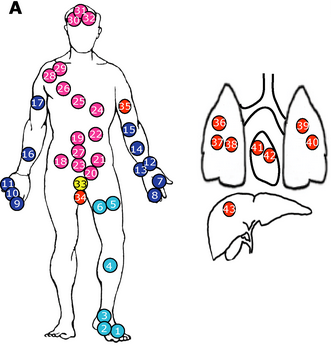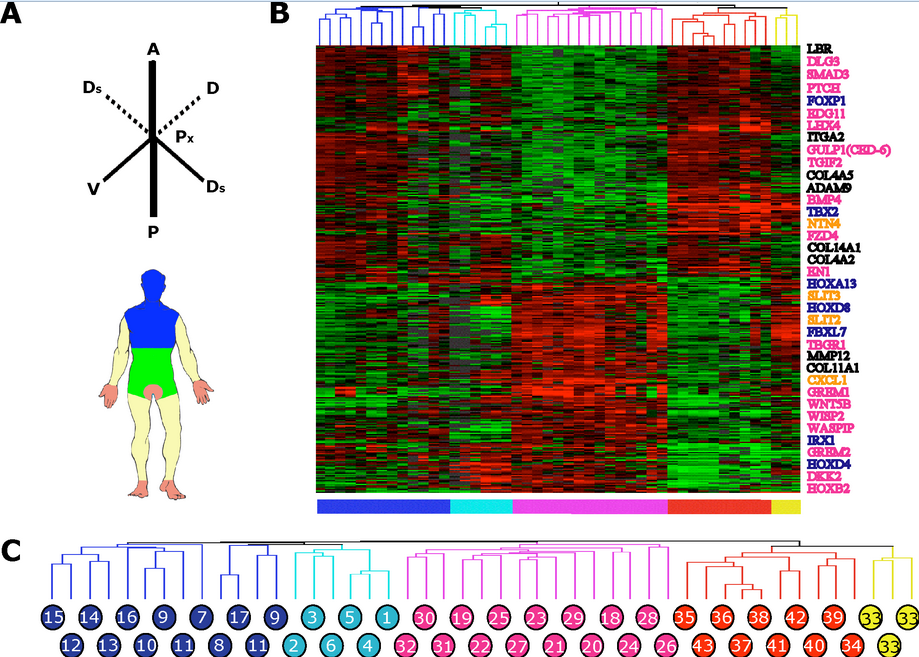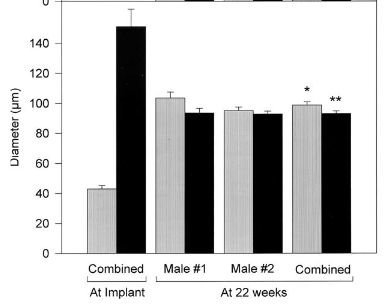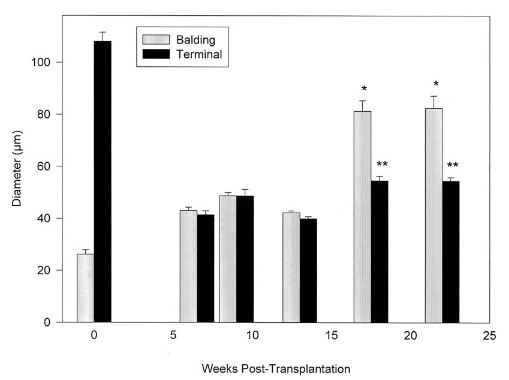Our local and global analyses revealed that the spatial patterns of fibroblast differentiation are associated with gene expression signatures related to anterior-posterior, proximal-distal, and dermal-nondermal divisions. These observations raise the possibility that fibroblast differentiation is governed in part by the combinatorial superposition of gene expression programs representing broad anatomic divisions, to confer distinct identities to the cells in each unique anatomic structure. To test this hypothesis, we mapped onto the body the positional boundaries suggested by the three distinct binary divisions of gene expression signatures (
Figure 5A and
Dataset S5). Each fibroblast sample was assigned to one of five classes (proximal, distal, anterior, posterior, or nondermal); we then performed a multiclass comparison to identify genes whose variation in expression most strongly distinguished one or more of the classes (see
Materials and Methods). We further required the genes to have differential expression in at least one of three anatomic divisions described above. Modeling the samples in this way allowed us to capture gene expression differences that distinguished fibroblast origin locally and were applicable throughout the body.
Three hundred thirty-seven genes met these criteria and appear enriched for several functional themes (
Figure 5B). The 337 genes identified by position-specific variation in expression included many transcription factors involved in specifying positional identity
(HOXA5, HOXA11, HOXA13, HOXD8, TBX2, TBX15, EMX2, FOXF1, FOXP1, and
TRPS1), signaling pathways involved in cell fate determination
(WNT1, WNT5b, WISP2, DKK2, GPC6, BMP4, GREM2, SMAD3, PTCH, and
GULP1), guidance molecules in cell migration
(NTN4, SLIT2, SLIT3, CXCL1, CCRL1, and
THBS1), extracellular matrix components
(COL4A2, COL4A5, COL8A2, COL10A1, COL11A1, FN1, EMILIN2, and
HS3ST3B1), and enzymes for remodeling the extracellular matrix
(ADAM9, ADAMTS5, MMP3, CSTE, CTSZ, PLAT, and
PLAU) (
Figure 5B). These biological themes are also supported by a quantitative enrichment analysis based on the public annotation Gene Ontology [
16] (
Table S1). The different combinations of these transcription factors, signaling proteins, and matrix environments could potentially regulate position-specific differentiation of fibroblasts and also provide signals to influence site-specific fates of neighboring cells, an important characteristic for specifying positional information in the stroma.
In addition, hierarchical clustering of all fibroblast samples based on variation in expression of these 337 genes placed all fibroblasts samples (47 of 47) into clusters composed exclusively of their anatomic neighbors (
Figure 5B and
5C). The five anatomic clusters defined by their patter of expression of this set of genes were upper limb, lower limb, head and trunk, foreskin, and nondermal tissues. These anatomical groupings were similar to the groups obtained by unsupervised hierarchical clustering of samples using all 7,580 variably expressed genes (
Figure 1C), but substantially more fibroblast samples were correctly grouped with their anatomic neighbors when these selected 337 genes were used. This improved organization by anatomic origin suggest that these 337 genes can capture much of the positional information of fibroblasts relative to three anatomic axes.




